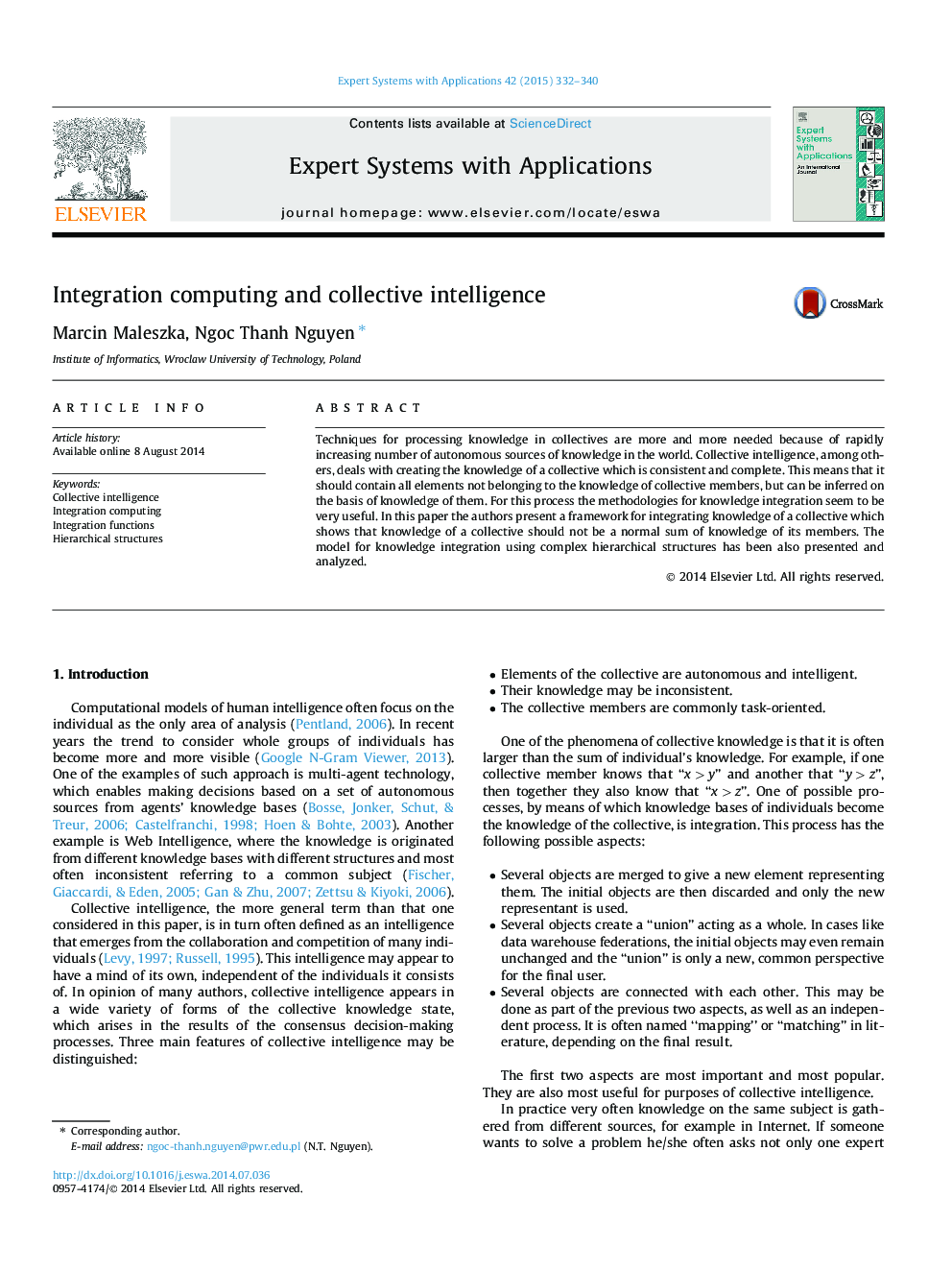| Article ID | Journal | Published Year | Pages | File Type |
|---|---|---|---|---|
| 382940 | Expert Systems with Applications | 2015 | 9 Pages |
•Complete definition and description of integration function and postulates.•Proposition of Aug function, which determines new knowledge gained in integration.•Consistent description of multi-level integration and necessary postulates.•Example of multi-level integration for two specific cases in tree integration.•Multiple examples of integration function and criteria for trees.
Techniques for processing knowledge in collectives are more and more needed because of rapidly increasing number of autonomous sources of knowledge in the world. Collective intelligence, among others, deals with creating the knowledge of a collective which is consistent and complete. This means that it should contain all elements not belonging to the knowledge of collective members, but can be inferred on the basis of knowledge of them. For this process the methodologies for knowledge integration seem to be very useful. In this paper the authors present a framework for integrating knowledge of a collective which shows that knowledge of a collective should not be a normal sum of knowledge of its members. The model for knowledge integration using complex hierarchical structures has been also presented and analyzed.
